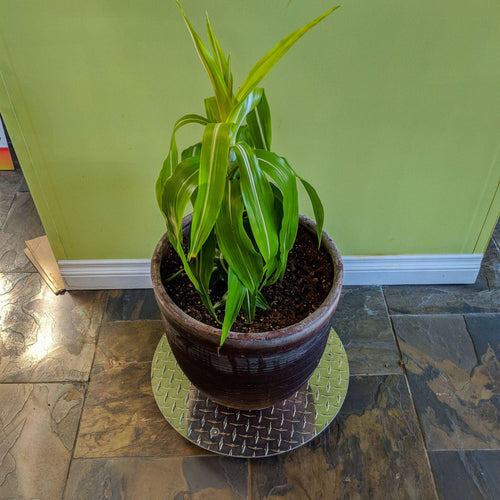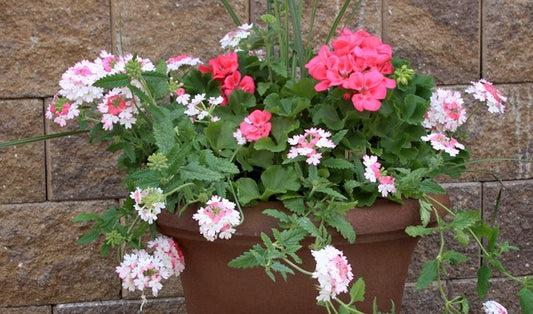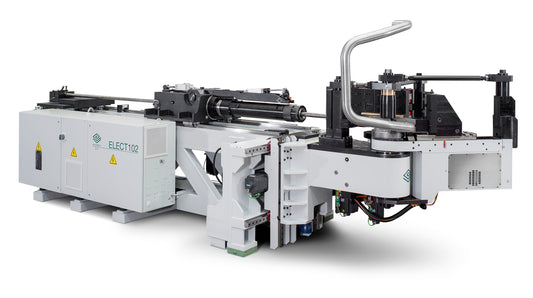Without a doubt, tomatoes are the vegetable plant most commonly grown in home gardens. They are relatively easy to grow, yielding bountiful results in relation to their size and growing needs. Luckily their easy-going nature means they thrive in growing conditions alternative to a traditional garden making it possible for apartment dwellers and those without a backyard living space to reap the benefits of home-grown tomatoes.
What Do Tomatoes Need to Grow?
It's no wonder tomato plants are found in so many gardens and backyards across the United States. While they thrive in a garden setting they will also grow well outdoors or inside the home in alternative places/situations with minimal care. They flourish as long as they receive the light, water, and fertilizer they require.
For optimum growth, plants need a location that receives a minimum of 6 to 8 hours of direct sunlight and has good air circulation to minimize diseases and insect pests.
Watering tomato plants correctly is essential for good growth. The potting soil should be kept evenly moist; water, when the top 1 to 2-inches, is dry to the touch. In the hot summer months, this can mean watering plants every day.
Due to the amount of vegetative growth and the size/amount of fruit a plant produces, tomatoes are classified as “heavy feeders” -- they require more fertilizer than most other vegetable plants for optimum growth. Feed them regularly through the growing season with an all-purpose or tomato-specific fertilizer.
Alternative Options to Growing Tomatoes
One of the cool things about growing tomatoes, is they are quite adaptable to a range of growing conditions both outdoors and inside the home.
Outdoor Alternatives
All of the outdoor alternative methods for growing tomatoes require a container of sorts that will hold potting soil (or other growing media) and is deep enough for the roots of a tomato plant. Some of the most common outdoor alternatives are raised bed, potted container, vertical gardens, planter boxes, hanging baskets, and upside down tomato growers.
● Raised beds can be constructed in just about any size or height you’d like, to take advantage of the space available. Make sure they are no more than 4 feet across so you can reach the center.
● Potted containers can be set outside on a patio or balcony atop a rolling plant caddy to make moving easier.
● Vertical gardens can be assembled on a patio, balcony, or along a fence to utilize the available upward space, maximizing a small space.
● Planter boxes can be constructed with deck railing planter brackets to grow tomato plants from the deck railings, keeping floor space open.
● Hanging baskets can be used to grow smaller varieties, once again helping to keep plants off the ground or floor, maximizing the space you have available.
● Upside down tomato growers are a specialty item, that can be purchased to grow flowers in the top of a hanging basket and then your tomato plants are planted so they hang from the bottom of the container.
Indoor Alternatives
Tomatoes can be grown indoors in either a container with potting soil or in a hydroponic growing system. In either case, make sure plants have adequate sunlight exposure or supplement them with grow lights.
Hydroponics is a method of growing plants, without soil, that provides the nutrients needed for growth via an aquatic solution circulating around their roots. Plants grown in hydroponic systems are known to use fewer resources, occupy less space, and are higher quality than those grown using traditional growing methods.
Important Facts About Growing Tomatoes
As said previously, growing tomatoes is fairly easy and straightforward, but these tips are incredibly helpful.
1. Many tomato plants need to be staked for support, as the weight of the fruit can easily topple a plant, potentially snapping the stem or branches.
2. There are two main classifications of tomatoes, depending on how they grow. Before buying plants, make sure you understand the difference in the two types.
a. Determinate tomatoes grow to a specific height, set by the plant’s genetics, and then stop growing. The fruit then ripens at about the same time. After ripening, the plant starts to deteriorate and stops producing fruit. Determinate tomatoes tend to be smaller plants and work well in container gardening.
b. Indeterminate tomatoes grow in a pattern opposite of determinate tomatoes. They do not have a predetermined height and will continue to grow all season; as long as the plant is actively growing it will set and ripen fruit. Indeterminate plants provide a slow and steady supply of fruit throughout the entire growing season.
3. Watch plants -- even indoor ones -- closely for insect pests. Tomato hornworms and aphids are the most troublesome.
a. Tomato hornworms: These pesky caterpillars damage tomatoes all throughout the United States. Light green in color, they are difficult to spot on plants and feed voraciously, eating through plant leaves and fruit rapidly.
b. Aphids: Another common garden pests, these tiny pear-shaped insects attach to the plant and suck sap from the tissue, causing distorted foliage and leaf drop.
4. Disease problems can wreak havoc on plants if not caught and treated quickly.
a. Late blight: A major problem in tomatoes, this disease spreads rapidly and can decimate an entire stand within a short amount of time. It occurs later in the growing season and is triggered by rainy, damp weather.
5. Blossom end rot is a management condition that damages the fruit on tomato plants. It appears as a dark, sometimes leathery, patch occurring at the bottom of the fruit. Originally thought to be caused by a lack of calcium, it is now known that blossom end rot develops when calcium can’t be adequately absorbed from the soil. It usually occurs because there is too little moisture in the soil; water plants evenly as a preventative.
Conclusion
Tomatoes are a great option to grow regardless of whether you have a garden or not, as they adapt to many alternative growing conditions. When provided with the correct amount of sunlight, moisture, and nutrients from fertilizer, tomato plants will provide a bountiful harvest whether grown outside or indoors.





